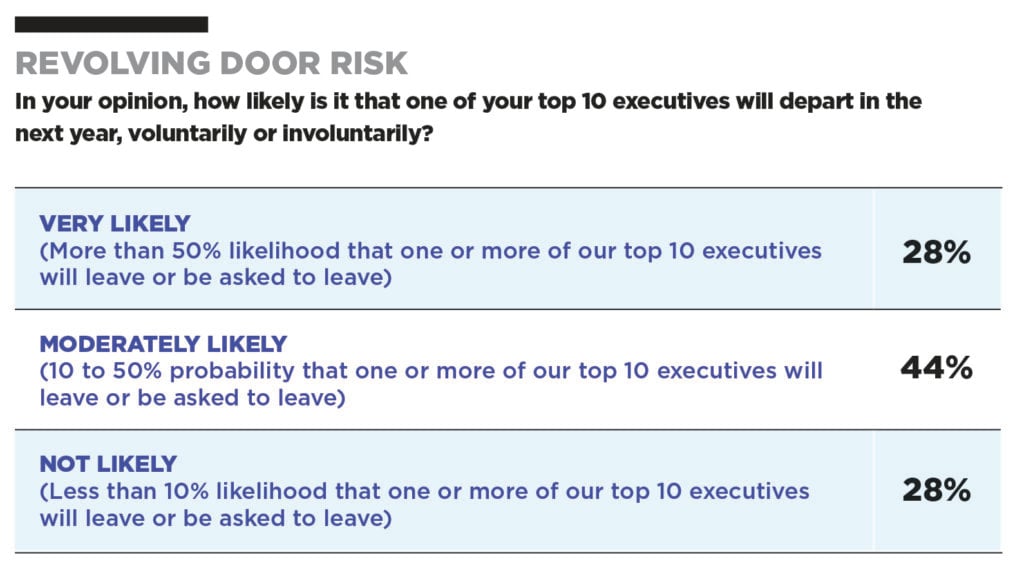As the final season of the hit HBO show “Succession” drew to its recent close, the world of high-stakes corporate leadership changes became the obsession of millions. In reality, most succession stories involve boards larger than TV’s Roy family, and many of them are similarly ill-prepared for the replacement of their CEO.
What all boards have in common is the responsibility for making sure the company is being competently led. Or better yet, that the leadership team, especially the CEO, has a high-trust relationship with what I refer to as its ideal stakeholders. Not all stakeholders are ideal, and it’s a heck of a lot easier to run a company when you are clear on who you want to be associated with.
Strong boards also ensure that the company is prepared for the unexpected, including surprise leadership transitions. A board that is unable to successfully execute a leadership transition—either by selecting the wrong newcomer or doing what the Disney board did in re-hiring a past CEO—has failed in one of its most crucial duties.
As sitting directors know well, those two things are considerably harder than they first appear. Getting the right CEO is rarely easy, and even battle-tested boardroom veterans may not fully appreciate how difficult the task can be. Here are some of the missteps to avoid in the succession process.
• Allowing the sitting CEO too much control over the process. In successful companies run by a remarkable visionary, succession stumbles often occur when the existing CEO seeks to cement their legacy by lining up an “operational” leader—one who will keep the visionary’s status quo.
Boards may acquiesce to this choice simply to avoid rocking the boat without realizing that replacing a visionary leader with an operational leader will likely result in disaster over the longer run. Well-run companies always have a compelling, future-focused vision, and transitioning to a CEO who merely maintains that status quo is stultifying.
If a departing CEO’s tenure has been mediocre, or worse, the board may choose to sideline the CEO and other members of the C-suite during the hiring process. That’s not necessarily a bad idea even in cases where the departing CEO has been a success. Boards with a CEO that hasn’t managed to identify and mentor a successor may want the CEO to stay out of the process as they look at outside candidates.
• Going for headlines. Another common misstep occurs when boards allow short-sightedness to color their succession plan. Public companies struggle more often with this, as they are prone to making decisions based on current market conditions. If the board believes the markets will reward its company stock price by making a flashy succession choice, it could be tempted to make a hasty, and incorrect, selection.
• Missing the link to culture. Sometimes boards will fail to ensure that the successor respects, and is committed to, preserving the guiding principles of the company. In most well-run companies, these are explicitly stated in some version of a mission or vision statement, and include core values, the ideal customer profile and what is often referred to as its purpose, passion or cause. These guiding principles are often deeply embedded in the company’s brand and sacrosanct with employees as well as customers.
The bottom line: Executing a succession process requires the board to take a long-term view of the company’s future, plan wisely and often requires some difficult conversations with the existing CEO and potential successors.
Boards must also do their best to leave ego out of the equation. If there are internal candidates suitable for the top job, the candidates need to know they are under consideration. A well-run company can, and should, have an honest discussion about the pros and cons of each serious candidate without fear of reprisal or bruised feelings.
Boards that value long-term thinking, guiding principles and transparency must align on what must be preserved and what is open for change. Products or services can come and go, but core values must be maintained. Boards need to be able to explain these clearly to candidates and other ideal stakeholders.
In advance of any leadership transition, a strong board should first examine its larger role in the life of the company. Does it genuinely understand the brand and what is sacrosanct? Does it share the current leader’s vision for where the company should be in a decade? Is it proud of the culture? Does it have any concerns with the markets it’s in? If not, what are the implications for the involvement of the current CEO in the transition process?
Also, if that vision isn’t clear, do they have the collective ability to advise a new CEO as she forms the vision for the company’s next 10 years? If not, the first conversation should be about the old board, rather than the new CEO.
Which takes us back to TV’s Roy family. CEO succession is as hard of a grind in real life as it is in fiction. Great boards need to attack the process with discipline and transparency.






